In industrial operations, steam boilers play a vital role in powering manufacturing processes, heating systems, and turbines. However, without accurate measurement of thermal efficiency, businesses risk fuel wastage, increased emissions, and elevated operating costs. Knowing how efficiently your boiler converts fuel energy into usable steam is crucial for maintaining operational performance, sustainability, and cost control.
The thermal efficiency of an industrial steam boiler is measured by calculating the ratio of useful heat output (in the form of steam) to the energy input from the fuel. This is typically done using two standard approaches: the Direct Method, which evaluates the energy output versus input directly, and the Indirect Method, which estimates efficiency by accounting for various heat losses. Accurate measurement requires reliable data on steam production, fuel consumption, flue gas composition, excess air, and system temperature and pressure conditions.
A well-informed efficiency measurement not only identifies energy losses but also unlocks pathways to performance optimization.
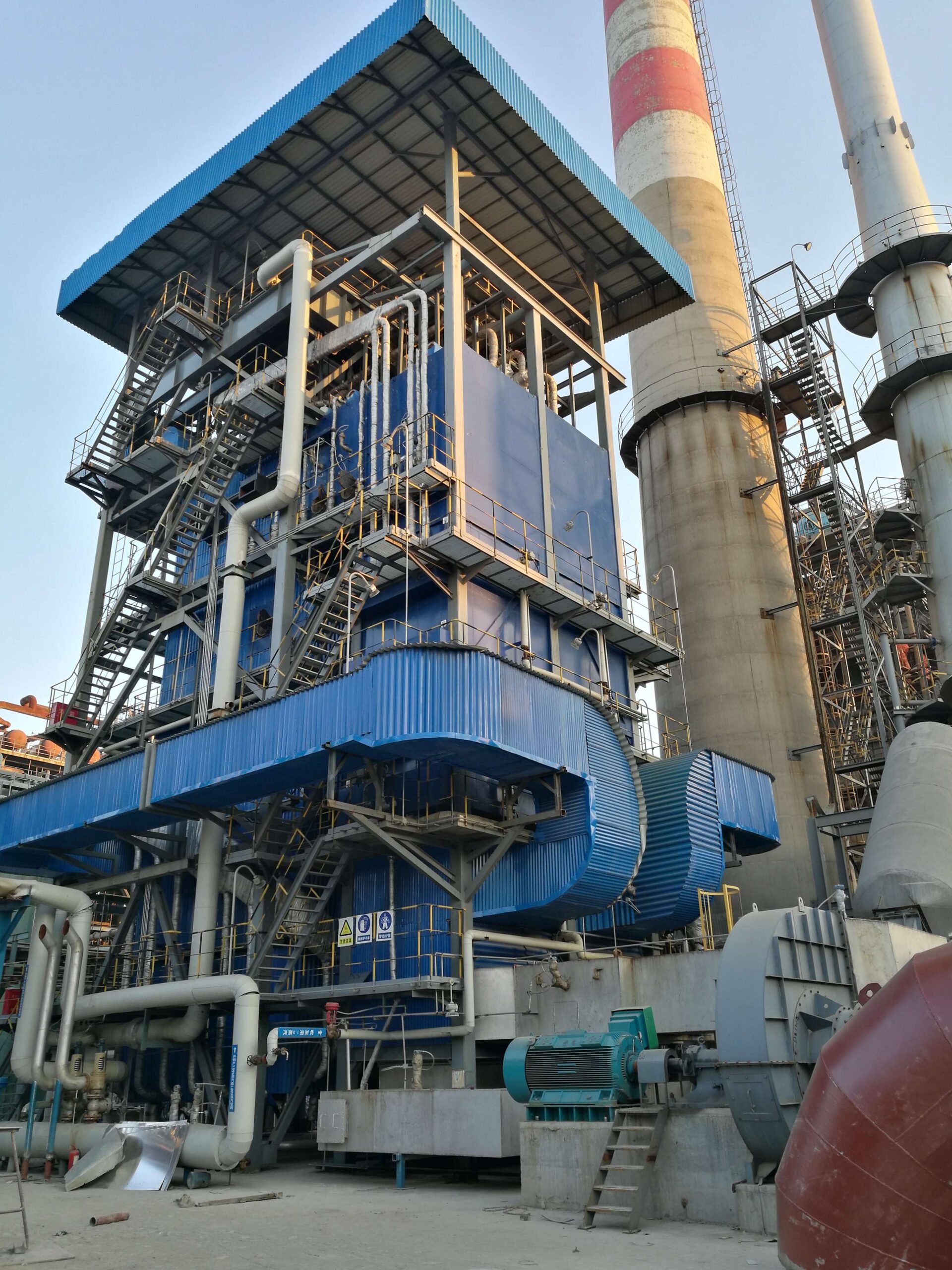
What Is Thermal Efficiency in an Industrial Steam Boiler System?
In industrial production, steam boilers are vital for heating, drying, power generation, and chemical processing. However, many plants unknowingly lose significant amounts of energy because their boilers are not running as efficiently as they could be. The result is wasted fuel, high emissions, and increased operational costs. To measure and improve this performance, industries rely on a key indicator called thermal efficiency. Understanding this concept is crucial for reducing energy consumption and improving sustainability in boiler operations.
Thermal efficiency in an industrial steam boiler system refers to how much of the fuel’s energy is successfully converted into usable steam. It compares the amount of heat the boiler produces (in the form of steam) to the total amount of heat energy provided by the fuel. The higher the percentage, the more efficient the boiler is at converting fuel into steam energy.
If a boiler is said to have 85% thermal efficiency, this means that 85% of the fuel’s energy is used to generate steam, while the remaining 15% is lost as waste—typically through the flue gases, radiation from the boiler surface, moisture in the fuel, or unburnt fuel particles.
Boiler thermal efficiency accounts for all heat produced during combustion.False
Boiler thermal efficiency only measures the portion of combustion heat that is converted into useful steam, not total heat generated.
🧯 Real-World Example: Explaining Without Formulas
Imagine you burn 100 units of energy (in the form of coal, gas, or biomass) to power your boiler.
If your boiler has 90% thermal efficiency, it successfully turns 90 of those units into steam.
The other 10 units are lost due to:
Heat escaping with flue gases (hot air going out of the chimney)
Heat radiated from the boiler walls
Water vapor created from fuel moisture
Unburnt particles in ash
The goal of thermal efficiency analysis is to minimize those 10 lost units by improving fuel combustion, reducing excess air, improving insulation, and managing moisture.
📊 Typical Thermal Efficiency Ranges by Boiler Type
| Boiler Type | Typical Thermal Efficiency (%) |
|---|---|
| Fire-tube Boiler (basic) | 70–80 |
| Water-tube Boiler (modern) | 80–88 |
| Condensing Boiler (natural gas) | 90–95 |
| Biomass Grate Boiler | 70–85 |
| Fluidized Bed Combustion (FBC) | 80–88 |
🔍 Factors That Affect Thermal Efficiency
| Factor | Effect on Efficiency |
|---|---|
| Fuel Quality | High-moisture or low-calorific fuels reduce efficiency |
| Flue Gas Temperature | High exhaust temperature means more heat lost |
| Excess Air Supply | Too much air reduces combustion temperature |
| Boiler Insulation | Poor insulation increases radiation losses |
| Steam Leaks or Blowdown | Reduces effective steam output |
| Unburnt Carbon in Ash | Indicates fuel is not being fully used |
🧪 Industrial Case Study
Textile Plant – 10 TPH Steam Boiler
Fuel: Indian coal
Initial Efficiency: ~72% (measured using output vs. input)
Problems Found:
Excess air was too high
Fuel had 18% moisture
Unburnt carbon in ash = 2.5%
Solutions Implemented:
Re-tuned air-to-fuel ratio
Improved coal handling and drying
Trained operators on best firing practices
New Efficiency: ~84%
Savings Achieved: ~12% fuel cost reduction annually
In conclusion, thermal efficiency is the most direct indicator of how effectively a steam boiler turns fuel into usable heat. It reflects real performance, not just theoretical potential. By focusing on improving this percentage, industries can reduce fuel consumption, lower emissions, and extend equipment lifespan—all while meeting sustainability and compliance goals. Thermal efficiency may be a single number, but it tells a powerful story about your entire energy system.
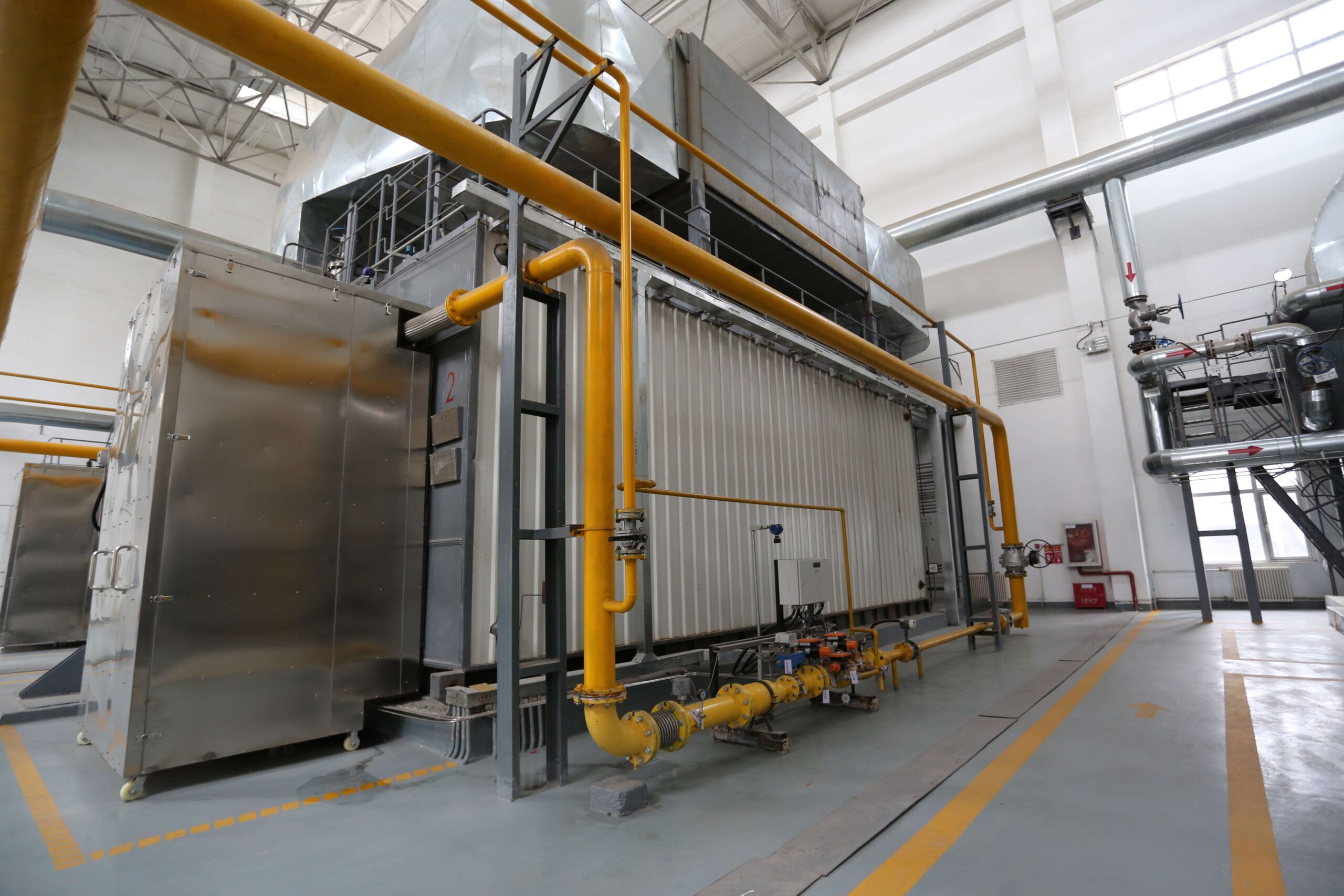
How Is the Direct Method Used to Measure Boiler Efficiency?
For many boiler operators and energy managers, understanding how efficiently their system converts fuel into usable steam is critical—but measuring that efficiency accurately can seem complicated. Fortunately, the Direct Method, also known as the input-output method, offers a straightforward way to calculate boiler efficiency using easily measurable parameters. Especially useful in field conditions and routine audits, this method is recognized by international standards like IS 8753 and BS 845. While it doesn’t diagnose detailed heat losses like the Indirect Method, it provides a reliable performance snapshot with minimal calculations and instrumentation.
The Direct Method is used to measure boiler efficiency by comparing the heat energy output in the form of generated steam to the heat energy input from the fuel. This involves measuring the quantity and enthalpy (heat content) of the steam produced and the quantity and calorific value of the fuel consumed. The result shows how much of the fuel’s energy is actually converted into usable steam energy.
In simpler terms, the Direct Method tells you: “Out of all the heat in the fuel I burned, how much went into making steam I can actually use?” It’s a fast and practical way to monitor boiler performance, especially when full loss analysis is not feasible.
The direct method of boiler efficiency measurement requires detailed heat loss breakdowns.False
The direct method calculates efficiency using only fuel input and steam output, without analyzing individual heat losses.
🔧 Key Data Needed for Direct Method
To apply the Direct Method in real-world boiler operation, you need just four basic pieces of data:
| Parameter | Measurement Description |
|---|---|
| Steam Flow Rate | How much steam the boiler produces (kg/hr) |
| Steam Pressure & Temperature | Determines the steam’s heat content |
| Fuel Consumption Rate | How much fuel is being burned (kg/hr or m³/hr) |
| Fuel Calorific Value (CV) | How much energy the fuel contains (kcal/kg or MJ/kg) |
All this information is typically available via boiler instrumentation or simple lab testing.
🧯 Step-by-Step: How the Direct Method Works (Without Complex Formulas)
Let’s say you’re running a coal-fired boiler:
You burn 1000 kg of coal per hour
The coal has a calorific value of 5000 kcal/kg
So, you’re putting in 5,000,000 kcal/hour of energy
The boiler produces 10,000 kg of steam per hour
The heat content of this steam (based on pressure/temperature) is 450 kcal/kg
That’s 4,500,000 kcal/hour of usable energy
Thermal Efficiency = (Output ÷ Input) × 100 = (4,500,000 ÷ 5,000,000) × 100 = 90%
This means the boiler is converting 90% of the fuel’s energy into steam, while the remaining 10% is lost (through flue gas, radiation, moisture, etc.).
📊 Direct Method Efficiency Benchmark Chart
| Boiler Type | Typical Efficiency via Direct Method |
|---|---|
| Basic Fire-Tube Boiler | 70–78% |
| Modern Water-Tube Boiler | 80–88% |
| Gas-Fired Condensing Boiler | 90–95% |
| Biomass-Fired Grate Boiler | 70–85% |
| FBC or CFB Boiler | 80–89% |
These are general ranges. Actual efficiency depends on fuel, operation practices, and maintenance.
📋 Advantages and Limitations of the Direct Method
| Pros | Cons |
|---|---|
| Simple and fast to perform | Does not show where losses occur |
| Requires basic instrumentation only | Less accurate for variable steam loads |
| Ideal for routine checks and audits | Can’t guide efficiency improvement directly |
| Easily understood by plant operators | Sensitive to measurement errors in steam flow |
It’s best used when quick answers are needed, or when paired with occasional Indirect Method analysis to identify losses.
🧪 Case Study: Direct Method Use in an Indian Textile Factory
Fuel: Biomass briquettes
Steam Demand: 6 TPH
Calorific Value of Fuel: 4000 kcal/kg
Fuel Use: 900 kg/hr
Heat Supplied to Steam: 2,250,000 kcal/hr
Fuel Heat Input: 3,600,000 kcal/hr
Efficiency: 62.5%
Actions Taken:
Added air control damper
Improved fuel drying
Conducted operator training
Result: Efficiency improved to 74%, saving over ₹8 lakhs in annual fuel cost.
In summary, the Direct Method is a practical, quick, and widely accepted approach to measuring boiler thermal efficiency in industrial settings. It may not explain all the heat losses, but it answers the essential question: “How much energy am I wasting?” When used regularly, it empowers operators and engineers to benchmark performance, spot sudden drops in efficiency, and initiate timely improvements—ensuring a safer, cleaner, and more economical steam generation process.
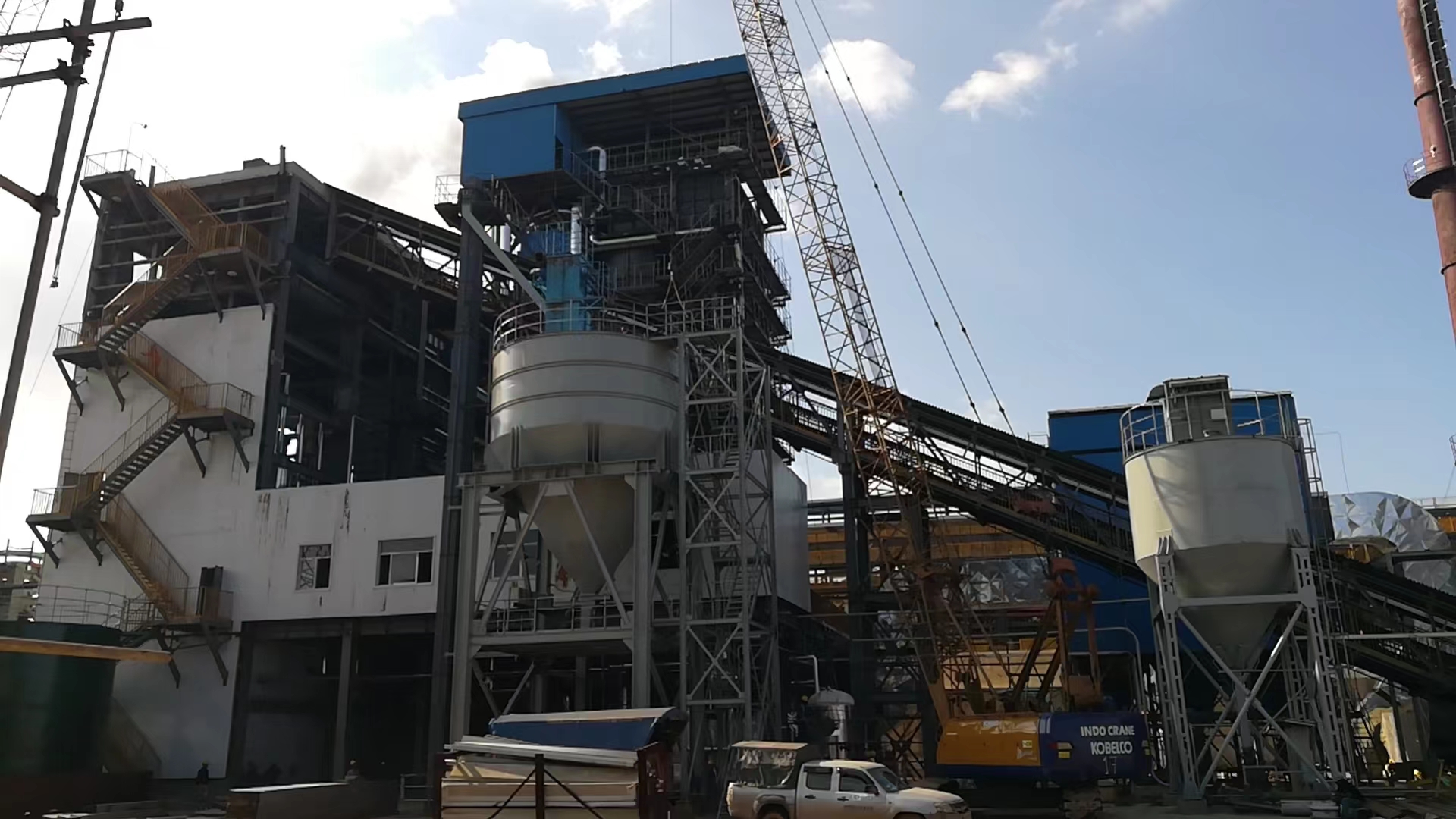
What Is the Indirect Method and Which Heat Losses Are Considered?
In industrial boiler operations, it’s not enough to know whether your system is “working”—you need to know how well it’s working, and more importantly, where energy is being lost. This is critical for performance optimization, emissions reduction, and cost control. While the Direct Method gives a basic efficiency number, it doesn’t explain the why behind inefficiencies. That’s where the Indirect Method—also known as the Heat Loss Method—comes in. It provides a detailed, scientific breakdown of all measurable heat losses within the boiler system, helping engineers take precise corrective actions.
The Indirect Method is a boiler efficiency calculation technique that determines thermal performance by measuring and subtracting all identifiable heat losses from 100%. It considers losses such as flue gas loss, moisture in fuel, unburnt fuel, radiation, and hydrogen combustion losses. This method offers a deeper understanding of where energy is lost in the system and is preferred for diagnostic, regulatory, and optimization purposes.
Unlike the Direct Method, which only measures steam output vs. fuel input, the Indirect Method helps answer where efficiency is being lost and how to recover it. It’s the gold standard for engineers, auditors, and plant managers who want to optimize fuel usage and achieve full regulatory compliance.
The indirect method identifies specific heat losses, making it more suitable for efficiency optimization.True
By measuring and analyzing each type of heat loss individually, the indirect method helps identify exact inefficiencies in boiler operation.
🔧 Heat Losses Considered in the Indirect Method
The Indirect Method calculates boiler efficiency as:
Efficiency (%) = 100 – (Total Heat Losses in %)
The main heat losses evaluated are:
| Heat Loss Category | Description | Typical Range (%) | Common Causes |
|---|---|---|---|
| Dry Flue Gas Loss | Heat carried away by hot flue gases exiting the stack | 5–15 | High excess air, high stack temperature |
| Heat Loss Due to Moisture in Fuel | Energy used to evaporate water in fuel | 1–4 | High moisture in wood, biomass |
| Hydrogen in Fuel Loss | Heat lost from vaporizing water formed during hydrogen combustion | 2–6 | Hydrogen-rich fuels (biomass, coal) |
| Unburnt Carbon Loss | Heat lost due to unburnt fuel in ash | 0.5–3 | Poor combustion, overfeeding |
| Moisture in Air Loss | Energy used to vaporize ambient air moisture during combustion | <1 | Usually low, but included |
| Radiation and Convection Loss | Heat loss from boiler surfaces to surroundings | 0.5–2 | Poor insulation, large surface area |
| Incomplete Combustion Loss | Energy lost due to CO and hydrocarbons in flue gas | 0.2–1.5 | Bad air-fuel ratio, poor mixing |
Each loss is calculated using fuel properties and flue gas measurements (O₂, CO₂, temperature, ash analysis, etc.), often with reference to standards like BS 845, IS 8753, or ASME PTC 4.1.
📊 Heat Loss Contribution in a Typical Biomass Boiler (Example)
| Loss Type | Contribution to Total Loss (%) |
|---|---|
| Dry Flue Gas Loss | 9.8% |
| Moisture in Fuel | 2.6% |
| Hydrogen in Fuel | 3.8% |
| Unburnt Carbon | 1.2% |
| Radiation and Convection | 1.0% |
| Total Losses | 18.4% |
| Efficiency | 81.6% |
This analysis makes it easy to identify that flue gas and hydrogen losses are the top priorities for improvement.
🛠️ Required Data for the Indirect Method
| Parameter | Purpose | Measured With |
|---|---|---|
| Flue gas temperature | Determines dry flue gas loss | Thermocouples or IR sensors |
| Ambient air temperature | Reference point for loss calculations | Thermometer |
| O₂ and CO₂ in flue gas | Indicates excess air level | Flue gas analyzer |
| Fuel composition (C, H, O, N, S) | Needed to calculate hydrogen loss and CV | Fuel lab test or known specification |
| Ash content and unburnt carbon | Used to estimate unburnt fuel loss | Gravimetric analysis |
| Fuel moisture content | For moisture-related losses | Moisture analyzer |
🧪 Case Study: Cement Plant Coal Boiler (25 TPH)
Initial Complaint: High fuel costs and no clear view of losses
Action Taken: Indirect Method audit using flue gas analysis + fuel sampling
Findings:
Dry flue gas loss = 10.6%
Hydrogen loss = 3.4%
Moisture in coal loss = 2.9%
Radiation loss = 1.5%
Unburnt carbon in ash = 2.1%
Efficiency Measured: 79.5%
Improvement Actions:
Reduced excess air via control tuning
Introduced coal drying
Trained operators on combustion control
New Efficiency: 87.2%
Annual Fuel Savings: ₹2.1 million
⚙️ Why Choose the Indirect Method?
| Advantage | Explanation |
|---|---|
| Loss-Specific Diagnosis | Identifies exactly where energy is lost |
| Optimization Guidance | Provides actionable targets (e.g., reduce flue gas temp) |
| Standardized Approach | Recognized by ASME, ISO, BIS, and energy auditors |
| Supports Long-Term Improvements | Establishes baseline for benchmarking and upgrades |
| Aligns with Digital Systems | Data can feed into SCADA, DCS, and energy monitoring software |
In conclusion, the Indirect Method offers deep visibility into your boiler’s energy performance by isolating each source of loss. It’s not just a measurement tool—it’s a diagnostic system that guides real operational improvements. While more data-intensive than the Direct Method, it delivers richer insights, helping facilities maximize thermal efficiency, reduce emissions, and save on fuel over the long term. For any industrial operation focused on sustainability, regulatory compliance, and cost efficiency, the Indirect Method is an essential tool in the energy management toolbox.
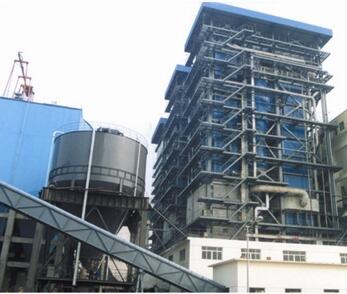
What Data and Instruments Are Needed for Accurate Efficiency Measurement?
Measuring boiler efficiency isn’t just about plugging a few numbers into a formula—it’s about collecting accurate, real-world data that reflects how your system is truly performing under load. Without reliable data, efficiency figures can be misleading, resulting in false conclusions, missed energy-saving opportunities, or even regulatory non-compliance. Whether you use the Direct Method or the Indirect Method, achieving accurate results requires the right data points and properly calibrated instruments. When these are collected with precision, efficiency measurement becomes a powerful tool for operational improvement and cost savings.
Accurate boiler efficiency measurement requires a combination of essential data points such as fuel consumption rate, fuel calorific value, steam generation rate, flue gas temperature, oxygen content, and unburnt carbon in ash, along with precise instruments including flow meters, flue gas analyzers, thermocouples, fuel moisture analyzers, and calorimeters. The quality of these measurements determines the reliability of both direct and indirect efficiency calculations.
In other words, “garbage in, garbage out” applies—if your data is flawed, your efficiency number won’t mean much. That’s why industrial boiler audits rely heavily on tested, calibrated, and appropriate measurement tools.
Accurate boiler efficiency measurement requires both operational data and properly calibrated instruments.True
Correct data collection using verified instruments ensures the reliability of both Direct and Indirect Method calculations.
📋 Key Data Parameters Needed for Efficiency Calculation
| Parameter | Why It’s Needed | Used In Method |
|---|---|---|
| Steam Generation Rate | Determines boiler heat output | Direct |
| Steam Pressure and Temperature | Needed to calculate enthalpy of steam | Direct |
| Feedwater Temperature | Affects net heat gain of steam | Direct |
| Fuel Consumption Rate | Determines heat input to the boiler | Direct and Indirect |
| Fuel Calorific Value (CV) | Total energy available from fuel | Direct and Indirect |
| Flue Gas Temperature | Used to calculate flue gas heat losses | Indirect |
| Ambient Air Temperature | Reference for all temperature-based losses | Indirect |
| O₂ and CO₂ in Flue Gas | Indicates excess air level and combustion quality | Indirect |
| Fuel Moisture Content | Affects latent heat loss | Indirect |
| Unburnt Carbon in Ash | Measures combustion completeness | Indirect |
| Radiation/Convection Loss Estimate | Assesses heat loss from boiler surfaces | Indirect |
Each of these data points directly influences the accuracy of the final efficiency result. Even a 2–3% error in flue gas temperature or fuel CV can lead to 5–10% error in efficiency calculation.
🛠️ Instruments Required for Accurate Measurement
| Instrument | What It Measures | Accuracy Level | Remarks |
|---|---|---|---|
| Flue Gas Analyzer | O₂, CO₂, CO, NOₓ, flue temp | High | Must be calibrated regularly |
| Steam Flow Meter | Steam mass flow rate | Medium–High | Ultrasonic, vortex, or orifice types |
| Fuel Flow Meter (Gas/Oil) | Fuel consumption rate (volume/mass) | High | Mass flow preferred |
| Fuel Weighing Scale (Solid) | Biomass or coal weight per hour | Medium–High | Install at fuel feed conveyor |
| Bomb Calorimeter | Fuel calorific value (CV) | High | Required for accurate heat input value |
| Moisture Analyzer | Fuel water content | Medium | Crucial for biomass |
| Ash Analyzer | Unburnt carbon in ash | Medium | Gravimetric method or loss-on-ignition |
| Temperature Sensors | Steam, feedwater, ambient air, flue gas | High | Thermocouples or RTDs |
| Pressure Gauges | Steam system pressure | High | Helps determine enthalpy of steam |
| Data Logger/DAS | Collects and stores all instrument readings | Very High | Required for audits and trending |
| Sample Instrument Setup for a 10 TPH Boiler |
| Measurement Point | Instrument Used |
|---|---|
| Steam output | Vortex flow meter |
| Flue gas temperature | K-type thermocouple |
| Fuel CV | Bomb calorimeter |
| O₂ & CO₂ in stack | Portable flue gas analyzer |
| Fuel input (solid) | Belt scale |
| Feedwater temperature | Digital thermometer |
🔧 Real-World Efficiency Audit: Data Impact
Case Study – Biomass Boiler (India)
Initial Issue: Reported 78% efficiency using outdated data
Actual Audit Instruments Used:
Portable flue gas analyzer (Testo 350)
Belt weigh feeder for biomass
Bomb calorimeter for CV testing
Manual fuel moisture testing
Recalculated Efficiency (Indirect): 72.1%
Key Findings:
Fuel CV was 12% lower than assumed
Moisture content at 32% (vs. estimated 15%)
Unburnt carbon in ash = 2.8%
After Correction:
Switched to drier fuel supply
Adjusted air-fuel ratio
Final efficiency: 82.6%
Fuel savings: ₹14.3 lakhs/year
📊 Importance of Calibration and Maintenance
| Practice | Why It Matters |
|---|---|
| Calibrate flue gas analyzer every 3–6 months | Ensures accurate O₂, CO₂, temp readings |
| Verify flow meter accuracy annually | Prevents fuel/steam flow misreporting |
| Replace filter/sensor elements regularly | Avoids drift in gas readings |
| Use standard reference fuel for CV testing | Validates calorimeter readings |
A single misreading from a dirty or miscalibrated analyzer can derail the entire audit. Precision is non-negotiable.
In conclusion, accurate boiler efficiency measurement requires a combination of reliable data and professionally calibrated instruments. Whether you’re using the Direct or Indirect Method, precision in measuring key parameters like flue gas composition, steam output, and fuel quality makes the difference between guesswork and actionable insight. In an era where energy efficiency and emissions compliance are critical, investing in the right tools and training ensures you unlock the full potential of your steam system.
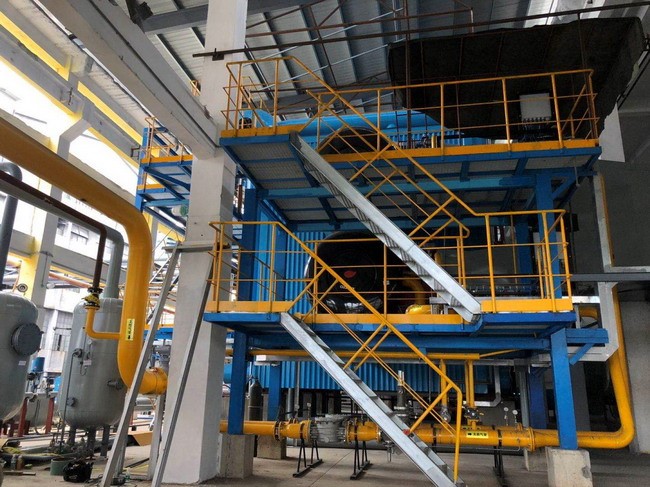
How Do Factors Like Fuel Type, Excess Air, and Insulation Impact Efficiency?
Industrial steam boiler efficiency doesn’t depend on a single variable—it’s the result of a complex interaction between fuel properties, air management, and system design. Facilities often experience declining efficiency without realizing that seemingly minor factors—such as using a high-moisture fuel, operating with too much excess air, or neglecting insulation—can silently drain performance. These issues often go unnoticed until energy costs surge or environmental audits raise red flags. Understanding how these factors impact efficiency is critical for making smart operational decisions and achieving consistent, high-performance steam generation.
Fuel type, excess air ratio, and insulation condition all significantly affect industrial boiler efficiency. Poor fuel quality (e.g., high moisture, low calorific value) reduces combustion energy, excess air increases flue gas heat loss, and inadequate insulation leads to radiation and convection losses from boiler surfaces. Together, these factors can lower overall efficiency by 10–25% if not properly controlled. Efficient operations require selecting appropriate fuel, optimizing combustion air input, and maintaining thermal integrity through insulation.
These are not theoretical concerns—each of these parameters has a measurable, real-world impact on the fuel burned, steam produced, and emissions released. Facilities that monitor and control these elements typically save millions annually in energy costs.
Using high moisture biomass in boilers decreases thermal efficiency.True
Moisture in fuel requires additional energy to evaporate water during combustion, reducing the net energy available for steam generation.
🌿 1. Fuel Type and Quality
Fuel is the primary input in any boiler system, and its properties directly determine how much usable energy is available. Key influencing attributes include:
| Fuel Property | Impact on Efficiency |
|---|---|
| Calorific Value (CV) | Higher CV = more energy per kg of fuel |
| Moisture Content | High moisture absorbs heat for evaporation |
| Ash Content | Reduces effective combustion area, causes fouling |
| Volatile Matter | Affects ignition and burn completeness |
Example: Fuel Efficiency Comparison
| Fuel Type | Calorific Value (kcal/kg) | Moisture (%) | Efficiency Impact |
|---|---|---|---|
| Wood Pellets | 4200–4600 | 6–10 | High (≥85%) |
| Wet Wood Chips | 2800–3300 | 30–50 | Low (≤70%) |
| Rice Husk | 3000–3200 | 10–20 | Moderate |
| Coal (Bituminous) | 5000–7000 | <10 | Very High |
Using a low-calorific, wet fuel means more energy is wasted on vaporizing water instead of producing steam, and combustion temperatures drop, which can also increase carbon monoxide (CO) and particulate emissions.
🌬️ 2. Excess Air Ratio
Combustion requires air, but too much air leads to heat loss. The goal is to provide just enough air to complete combustion (called stoichiometric air) plus a slight margin (called excess air) to avoid unburnt fuel.
| Excess Air (%) | O₂ in Flue Gas (%) | Effect on Efficiency |
|---|---|---|
| 10–20% | 2–4% | Optimal—high efficiency |
| 30–50% | 6–8% | Heat loss increases |
| >50% | >8% | Severe flue gas loss and low efficiency |
Every 1% increase in O₂ above optimal can reduce boiler efficiency by 0.5–1%, because:
More air → more flue gas volume
More hot gas exits the stack → higher stack temperature
More energy lost to the atmosphere
Efficiency Curve Example:
| O₂ (%) in Flue Gas | Estimated Boiler Efficiency (%) |
|---|---|
| 2.5 | 85.5 |
| 4.0 | 83.0 |
| 6.0 | 80.2 |
| 8.5 | 77.1 |
Control solution: Use oxygen trim control systems and flue gas analyzers to continuously monitor and adjust combustion air in real-time.
🧱 3. Boiler Insulation and Heat Loss
Boilers operate at high temperatures and have large surface areas—without proper insulation, significant heat escapes into the surrounding air.
| Insulated Surface | Typical Heat Loss Without Insulation (%) | With Insulation (%) |
|---|---|---|
| Boiler Shell | 2.5–4.5% | 0.5–1% |
| Steam Headers | 3.0–6.0% | 1–2% |
| Feedwater Lines | 1.5–3.5% | <1% |
Radiation and convection losses are included in the Indirect Method and can account for up to 2–5% of total energy loss in older or poorly maintained systems.
Hot Spot Case Study:
Infrared scanning of a biomass boiler showed a 150°C surface temperature due to degraded insulation
Re-insulated shell dropped surface temp to 55°C
Result: 2.1% gain in overall thermal efficiency and safer work environment
🔧 Combined Impact Analysis: Same Boiler, Three Scenarios
| Condition | Measured Efficiency (%) | Remarks |
|---|---|---|
| Wet biomass (40% moisture), 7% O₂, old insulation | 68.5 | High moisture + excess air + loss |
| Dry biomass (12%), 4% O₂, good insulation | 82.3 | Optimal setup |
| Same as above but air tuning not done | 78.4 | Efficiency lost to excess air |
Improving just one factor may yield 2–5% efficiency gains—but optimizing all three together can result in 10–15% fuel savings.
In conclusion, fuel type, excess air ratio, and insulation quality are three of the most influential—but often underestimated—factors affecting industrial boiler efficiency. Each can either enhance or hinder energy conversion depending on how well they are managed. Facilities that regularly analyze these parameters and make targeted improvements not only reduce operating costs, but also extend equipment life, reduce emissions, and comply more easily with environmental regulations. If you’re looking to boost boiler efficiency, these are the first three places to look.
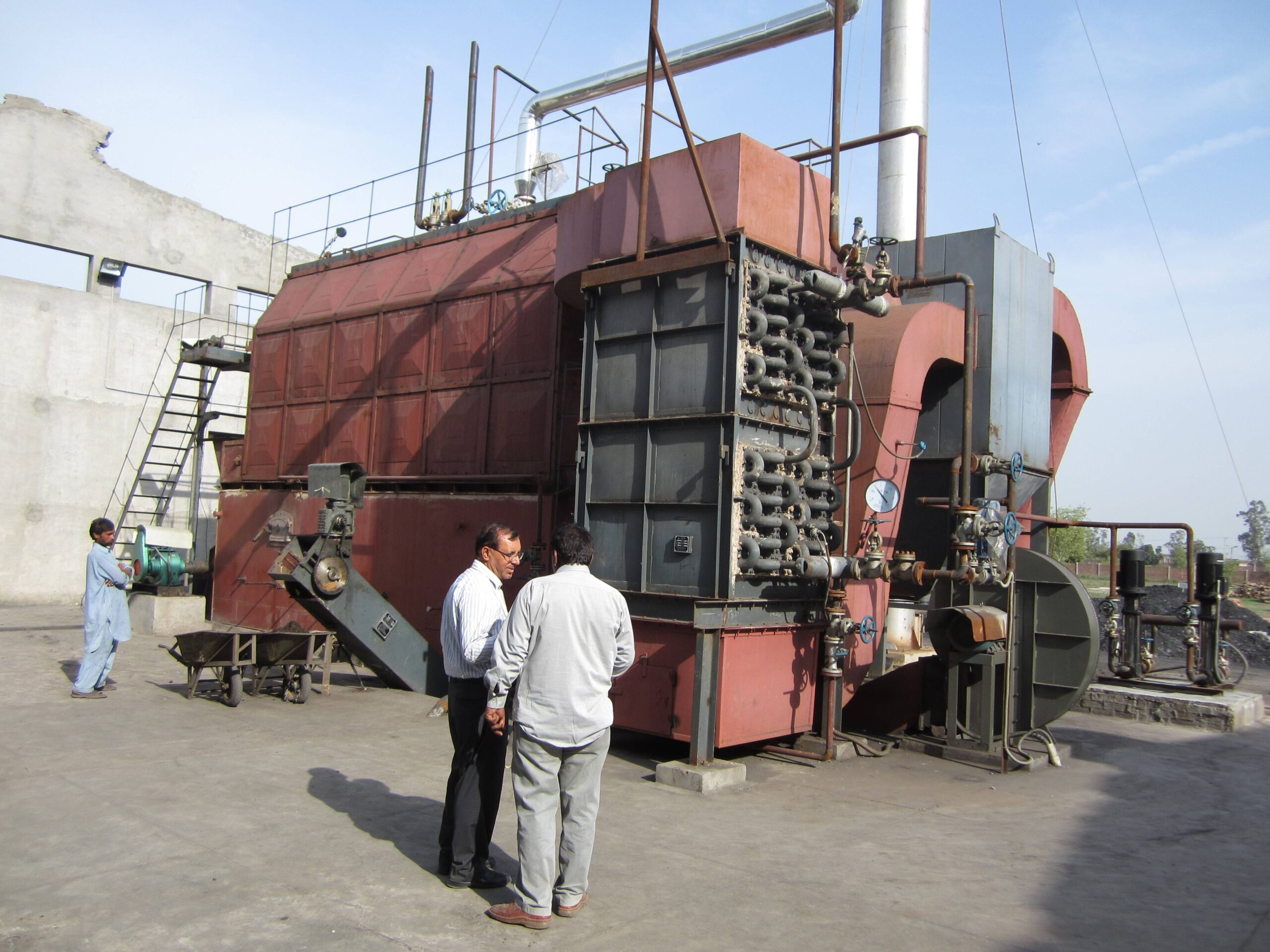
How Can Efficiency Monitoring Lead to Reduced Energy Costs and Emissions?
In many industrial facilities, boilers and thermal systems consume the lion’s share of fuel—often accounting for more than 30–40% of total energy costs. Yet, these systems are frequently run without ongoing performance checks. The result? Fuel is wasted, emissions exceed targets, and small inefficiencies spiral into large financial and environmental losses. This is where efficiency monitoring becomes indispensable. By continuously tracking boiler performance, facilities can detect underperformance early, make timely adjustments, and realize substantial savings—while also cutting greenhouse gas and pollutant emissions. It’s a win for operational budgets, sustainability goals, and regulatory compliance.
Efficiency monitoring enables facilities to identify fuel waste, combustion imbalances, equipment degradation, and suboptimal operating conditions in real time. By correcting these inefficiencies promptly, plants can lower their fuel usage by 5–15%, reduce CO₂ emissions proportionally, and avoid costly overhauls. Monitoring also supports smarter maintenance planning, improved air-fuel control, and long-term performance benchmarking—all of which contribute directly to energy cost savings and reduced environmental impact.
Without monitoring, inefficiencies go undetected. With monitoring, every parameter—such as flue gas temperature, O₂ content, or steam generation—becomes a lever for savings.
Continuous efficiency monitoring can lead to a measurable reduction in both fuel costs and emissions.True
By detecting inefficiencies and enabling timely corrective actions, monitoring helps reduce unnecessary fuel consumption and lowers pollutant output.
🔧 Key Ways Efficiency Monitoring Reduces Energy Costs
| Efficiency Monitoring Function | Energy Savings Impact |
|---|---|
| Excess Air Optimization | Reduces fuel burned by 2–5% |
| Flue Gas Temp Control | Recovers heat, boosts efficiency by 1–3% |
| Steam Load Balancing | Avoids overfiring, reduces standby losses |
| Fuel Moisture Tracking | Promotes fuel drying, increases CV usage |
| O₂ Trim System Tuning | Maintains peak combustion performance |
When these parameters are monitored and managed continuously, even small improvements become compounding savings over time.
📈 Case Example: 10 TPH Biomass Boiler with Monitoring System
| Parameter Before Monitoring | Value | After Optimization | Value |
|---|---|---|---|
| Flue Gas Temp | 245°C | Flue Gas Temp | 180°C |
| O₂ in Flue Gas | 8.2% | O₂ in Flue Gas | 4.5% |
| Fuel Moisture | 38% | Fuel Moisture | 25% |
| Boiler Efficiency | 72.4% | Boiler Efficiency | 83.1% |
| Fuel Cost (per year) | ₹9.8 million | Fuel Cost | ₹8.1 million |
| CO₂ Emissions (t/year) | 2,950 | CO₂ Emissions | 2,410 |
Savings Achieved:
Annual Fuel Savings: ₹1.7 million
CO₂ Reduction: 540 tons/year
Payback on Monitoring System: <9 months
🌍 Emissions Reduction Through Monitoring
Every unit of fuel saved translates into lower emissions—both greenhouse gases (like CO₂) and pollutants (like NOₓ, CO, and PM). Here’s how monitoring helps:
| Emission Type | Monitoring Benefit |
|---|---|
| CO₂ | Reduced fuel consumption = less carbon |
| NOₓ | Maintains proper air-fuel ratio |
| CO | Detects incomplete combustion |
| Particulate Matter (PM) | Helps control ash carryover via temperature and airflow management |
| SO₂ | Linked to sulfur content—tracking helps fuel switching decisions |
Estimated Emission Reductions Per 10% Fuel Savings
| Pollutant | Reduction Estimate (per ton of fuel saved) |
|---|---|
| CO₂ | 1.5–2.8 tons |
| NOₓ | 2–4 kg |
| CO | 5–10 kg |
| PM | 1–2 kg |
| SO₂ | 1–3 kg (fuel-dependent) |
🛠️ What Monitoring Systems Are Used?
| Monitoring Tool | Function | Benefit |
|---|---|---|
| Flue Gas Analyzer | Measures O₂, CO₂, CO, NOₓ | Optimizes combustion |
| Steam Flow Meter | Tracks steam output | Monitors energy conversion |
| Fuel Flow/Weight Sensor | Tracks fuel input | Enables accurate efficiency calculation |
| CEMS (Continuous Emissions Monitoring System) | Logs pollutants to regulatory portal | Ensures compliance and real-time control |
| Data Acquisition System (DAS) | Centralizes all data in one dashboard | Enables predictive analysis |
Many facilities also integrate AI-based monitoring platforms that automatically analyze historical data and suggest adjustments—leading to “self-optimizing” boiler systems.
🔍 Monitoring Frequency and Decision Making
| Monitoring Frequency | Decision Triggered |
|---|---|
| Continuous (real-time) | Auto-tune air-fuel ratio, prevent shutdowns |
| Daily Reports | Adjust feed rates, identify anomalies |
| Monthly Trends | Schedule preventive maintenance |
| Annual Audits | Strategic equipment upgrades, ROI reviews |
Facilities that rely solely on annual audits often miss hundreds of thousands in preventable losses each year.
In conclusion, efficiency monitoring transforms boiler operation from reactive to proactive. It equips managers with real-time insights to minimize waste, optimize fuel use, and cut emissions—turning every percentage point of efficiency gained into measurable financial and environmental returns. In an age where energy cost control and carbon footprint reduction are critical business goals, efficiency monitoring is no longer optional—it’s essential.
🔍 Conclusion
Measuring the thermal efficiency of an industrial steam boiler is an essential practice for identifying energy inefficiencies, reducing operating costs, and ensuring environmental compliance. By applying either the Direct or Indirect Method, facilities can gather actionable insights into boiler performance. Integrating regular efficiency audits into your maintenance routine ensures that your boiler system operates at its optimal capacity, with minimal energy loss and maximum return on fuel investment.
📞 Contact Us
💡 Need assistance measuring or optimizing your steam boiler’s efficiency? Our engineering team offers efficiency audits, combustion tuning, and system upgrades tailored to your industrial setup.
🔹 Reach out today and take control of your steam boiler’s performance and fuel efficiency! ♨️📊✅
FAQ
What is thermal efficiency in an industrial steam boiler?
Thermal efficiency is the percentage of fuel energy that is converted into useful steam output. It indicates how well the boiler utilizes fuel to generate steam and is key to controlling operational costs and emissions.
What are the methods to measure thermal efficiency in a steam boiler?
Two standard approaches are used:
Direct Method – Compares energy output with input.
Indirect Method – Calculates losses and subtracts from 100%.
How is the Direct Method applied to a steam boiler?
The Direct Method calculates boiler efficiency as:
Efficiency (%) = (Steam Output × Enthalpy Gain) / (Fuel Input × Calorific Value) × 100
It’s simple and quick but does not identify where inefficiencies occur.
What does the Indirect Method involve?
The Indirect Method evaluates efficiency by accounting for heat losses (e.g., flue gas loss, radiation, unburned fuel) and subtracting them from 100%. It provides a detailed diagnosis of boiler inefficiencies.
Why is thermal efficiency measurement important in industrial operations?
Measuring thermal efficiency helps improve fuel utilization, reduce emissions, extend equipment life, and maintain compliance with environmental standards. It’s also essential for energy audits and performance optimization.
References
Boiler Efficiency Testing Methods – https://www.energy.gov
Direct and Indirect Efficiency Calculation – https://www.sciencedirect.com
Steam Boiler Energy Performance Guide – https://www.researchgate.net
ASME Boiler Efficiency Standards – https://www.asme.org
Heat Loss Analysis in Steam Boilers – https://www.epa.gov
Optimizing Industrial Steam Systems – https://www.iea.org
Best Practices in Boiler Energy Auditing – https://www.mdpi.com
Combustion and Efficiency Monitoring Tools – https://www.automation.com
Steam Generation and Fuel Economy – https://www.bioenergyconsult.com
Boiler Performance and Maintenance – https://www.energysavingtrust.org.uk

